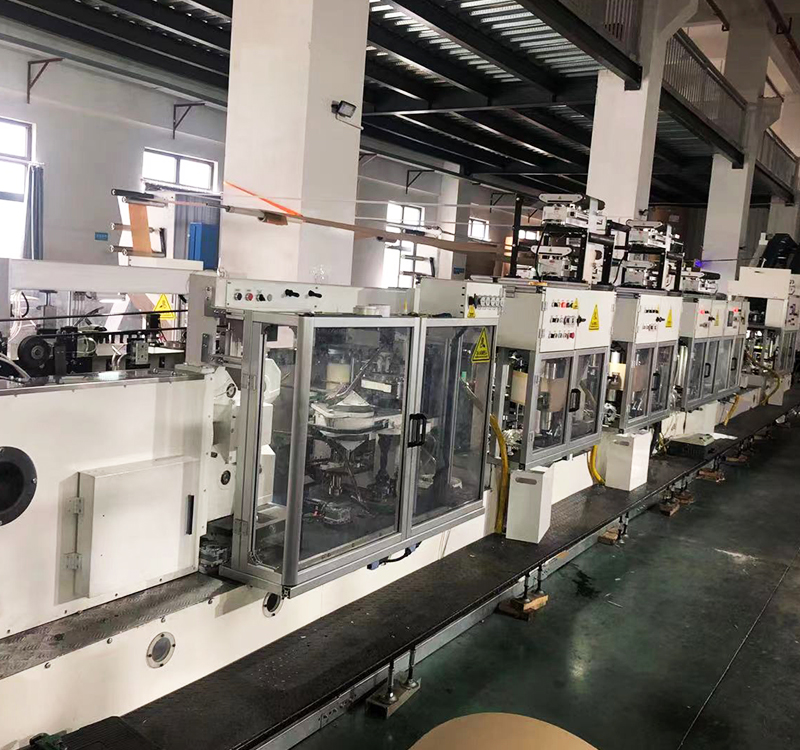Essential Safety Mechanisms in Modern Paper Bag Manufacturing Equipment
Release time:2025-05-28 Classification:Knowledge
The production of paper bags, from simple grocery sacks to complex retail carriers, involves sophisticated machinery operating at high speeds. Protecting operators and maintenance personnel from potential hazards inherent in such equipment is paramount. Modern paper bag machine manufacturers prioritize integrating comprehensive safety features directly into their designs, moving beyond mere compliance to create inherently safer work environments. Understanding these essential mechanisms is crucial for safe operation and maintenance.

1. Robust Mechanical Guarding: The First Line of Defense
The most fundamental safety features are physical barriers preventing contact with dangerous moving parts. This includes:
- Fixed Guards: Permanently secured enclosures made of durable metal or polycarbonate shielding critical zones like drive shafts, gearboxes, chain drives, and cutting mechanisms. These are interlocked (see below) to prevent machine operation when open.
- Interlocked Guards: Movable panels or doors providing necessary access for setup, jam clearing, or maintenance. These are connected to the machine's control system via safety-rated switches (e.g., tongue interlocks, magnetic switches). Opening the guard automatically triggers a safe stop condition – cutting power and initiating braking – preventing the machine from operating until the guard is securely closed and the restart sequence is correctly initiated.
- Adjustable Guards: Used in areas like the infeed or outfeed, allowing flexibility for different bag sizes while still preventing access to nip points and rollers.
2. Advanced Electro-Sensitive Protective Equipment (ESPE)
Where physical guarding is impractical for operational reasons (e.g., frequent material feeding or monitoring), non-contact safety features are employed:
- Safety Light Curtains: Arrays of infrared beams create an invisible sensing field, typically protecting high-risk areas like the forming section, gluing stations, or folding areas. If a beam is broken (by a hand, tool, or unintended object), the machine initiates an immediate safety stop. Resolution is chosen based on the risk (finger, hand, or body detection).
- Laser Scanners: Used for area monitoring, especially around automated sections or robot interfaces. They create defined two-dimensional warning and safety zones. If an operator enters the safety zone, the machine stops; entering a warning zone might trigger an audible/visual alarm before a stop if penetration continues.
- Safety Mats: Pressure-sensitive mats placed on the floor around hazardous zones. Stepping onto the mat causes the machine to stop, useful for areas requiring operator presence near moving parts during specific modes.
3. Safety-Related Control Systems (SRCS)
The "brain" controlling all safety features adheres to stringent standards (like ISO 13849-1). Key components include:
- Safety Relays & Programmable Safety Controllers (PSS): These specialized devices process signals from safety devices (e.g., E-stops, interlocks, light curtains). They are designed with redundancy, self-monitoring, and fault detection to ensure a high level of reliability (Performance Level 'd' or 'e', Safety Integrity Level SIL 2/3). A detected fault within the safety circuit forces the machine into a safe state.
- Emergency Stop (E-Stop) Circuits: Easily identifiable, mushroom-head buttons are strategically placed around the machine. Activating any E-stop triggers an immediate, uncontrolled stop (Category 0 per ISO 13850) by cutting power to hazardous motions. The circuit is hard-wired, failsafe, and requires manual reset (twist/pull) at the activated button before restart is possible.
- Two-Hand Control (TCH): Required for specific high-risk, repetitive tasks like manual feeding near a point of operation. Operators must depress two buttons simultaneously, positioned far enough apart to ensure both hands are safely away from the hazard zone, to initiate a single machine cycle.
4. Ergonomic and Operational Safety Enhancements
Beyond core guarding and controls, modern machines incorporate design elements promoting safer interaction:
- Clear Safety Signage: ISO-standard pictograms and text labels clearly indicate hazards (crush points, shear points, electrical shock, hot surfaces), mandatory PPE requirements, and safety device locations.
- Audible and Visual Warning Systems: Distinct alarms (horns, beepers) and flashing beacons alert operators before machine start-up, during automatic resets, or to indicate a fault condition.
- Reduced Noise Emissions: Sound-dampening enclosures and vibration isolation minimize operator fatigue and improve communication, indirectly enhancing safety awareness.
- Safe Lubrication Points: Designed to allow lubrication without removing guards or exposing personnel to moving parts.
- Tool-Free Guard Access (where safe and feasible): Simplifies necessary interventions like jam clearing, reducing temptation to bypass safety procedures.
5. Operational Safety Protocols and Modes
Safety is also managed through controlled machine states:
- Maintenance/Servicing Mode: Activated via a secure key switch, this mode may allow limited motion (jog, inch) for setup or troubleshooting while overriding some normal operation interlocks. Crucially, access to this mode is restricted (e.g., via key control), and enhanced safety procedures (Lockout/Tagout - LOTO) are mandatory before entering hazardous zones. Speed is often severely restricted in this mode.
- Safe Speed and Safe Standstill Monitoring: Control systems verify that hazardous motions have stopped (via encoders or sensors) before allowing guard doors to unlock or safety zones to be deactivated. Speed monitoring ensures the machine cannot accelerate unexpectedly during setup.
Conclusion: An Integrated Safety Culture
The safety features integrated into modern paper bag machine design represent a multi-layered approach. From the fundamental physical barriers to sophisticated electronic sensing and intelligent safety controllers, these essential mechanisms work in concert to mitigate risks. However, technology alone is insufficient. Effective safety requires a holistic culture: comprehensive operator training on specific machine hazards and safety systems, strict adherence to procedures (especially LOTO during maintenance), regular inspection and functional testing of all safety devices, and clear management commitment. By prioritizing these integrated safety features and safe work practices, paper bag manufacturers can significantly reduce the risk of accidents, protect their workforce, and ensure smoother, more productive operations. Investing in advanced machine safety is not just a regulatory obligation; it is a fundamental responsibility and a cornerstone of efficient manufacturing.






